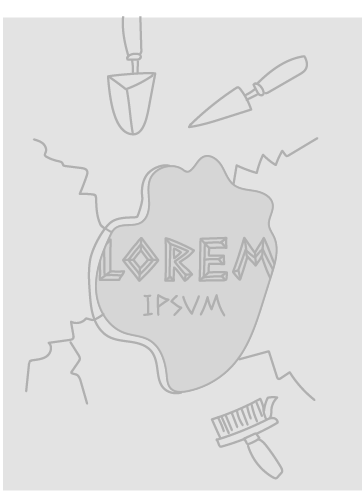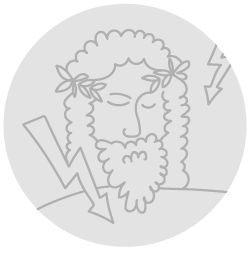Title of the work
Country of the First Edition
Country/countries of popularity
Original Language
First Edition Date
First Edition Details
Carlos Goñi, Cuéntame un mito. Barcelona, Spain: Ariel, 2012, 256 pp.
ISBN
Genre
Chapter book*
Target Audience
Young adults
Cover

We are still trying to obtain permission for posting the original cover.
Author of the Entry:
Lisa Dunbar Solas, independent researcher, drlisasolas@ancientexplorer.com.au
Peer-reviewer of the Entry:
Elizabeth Hale, University of New England, ehale@une.edu.au
Daniel A. Nkemleke, University of Yaoundé 1, nkemlekedan@yahoo.com

Carlos Goñi Zubieta
, b. 1963
(Author)
Carlos Goñi Zubieta was born in Pamplona in 1963 and is a Spanish writer, teacher and philosopher. He was awarded a doctorate in Philosophy from La Universidad de Barcelona.
Goñi has written more than 20 books, which cover a wide range of topics, including philosophy, history, mythology and feminist studies. With his wife, Pilar Guembe, he has co-written a number of books on child education. He has argued that philosophy is important to education and has advocated that ten primary ‘maxims’ should be observed. These include that education requires that ‘an affective relationship’ exists between the educator and student. Education also has ‘natural cycles’ and should not be ‘hurried’ (BBVA Interview, 27 October 2020, translated by L.A. Dunbar). Meanwhile, it is ‘personalised’, as each child possesses an unique constitution and their ‘own way of learning …’ (BBVA Interview, 27 October 2020, translated by L.A. Dunbar).
His published titles related to classical antiquity include Alma Femenina: La Mujer en la Mitologia, which examines three major ancient Greek women, Athena, Helen of Troy and Aphrodite, using prototypical analysis. For children and young adults, he has written a number of titles related to classical antiquity, including Una de Romanos: Un paseo por la historia de Roma (2007), Cuéntame un mito (2001), Cuéntame una historia, un paseo por el mundo antiguo de la mano de Heródoto (2011). In October 2021, Editorial Ariel released a new edition of Cuéntame un mito.
Throughout his career, he has been awarded a number of literary prizes. In 2005, he was awarded el Premi de Filosofía Arnau de Vilanova. Five years later, he was the recipient of el Premio de Ensayo Becerro de Bengoa.
Source:
Casa del libro (accessed: August 8, 2022).
BBVA Interview, 27 October 2020 (accessed: August 8, 2022).
Bio prepared by Lisa Dunbar Solas, drlisasolas@ancientexplorer.com.au
Summary
Cuéntame un mito is an unillustrated compilation of 43 classical myths. The myths included in the book related to the following events, objects, characters and places: Musas; Crono; Prometeo; Acontius; Io; Actaeon; Danae; Medusa; Oedipus; Daffodil and Echo; Psykhe; Phaeton; the rape of Persphone; Orpheus and Eurydice; the apple of Eris; Paris; Helen; the sacrifice of Iphigenia; Achilles; Patroclus; Amazon; the horse of Troy; Ulysses; Flora; Polyphemus; Aeolus; Circe; Sirens; the cows of the Sun; the island of Feacios; Penelope; Heracles; Eurystheus; Ate; Minotaur; Thesus; Icarus; Aegeus; Deucalion; Phineus and the Harpies; and, Hera.
Each retelling of the mythical stories is followed by a commentary titled Sugerencias (Suggestions). This section provides additional historical information and references, and draws out key philosophy issues, topics or themes of the story for the reader to reflect upon.
Analysis
Cuéntame un mito is an introduction to the diverse and complex nature of classical mythology and is suitable for young adults and older. The book draws extensively on Goñi’s academic background in philosophy.
The Sugerencias play an essential role in the book. In these sections, Goñi helps contextualise the multi-vocal myths for the reader by providing key historical and cultural information, while also extracting layers of meaning mainly through theoretical analysis, primarily mythological and philosophical in orientation. For this reason, the book may also serve to introduce young adults to key theoretical ideas, concepts and works, including those by Søren Kierkegaard, Fredrich Nietzsche, and Gilles Lipovetsky and Claude Lévi- Strauss. Following Goñi (p. 10), this kind of analysis and reflection can aid personal development. In the book’s introduction, he argues that it is imperative for individuals to reflect on own lived story and articulate it into ‘a greater group’, such as classical mythology. The book’s approach seemingly corresponds with his broader view of education, which he views as an individual process (see interview with BBVA 2020, accessed: August 8, 2022). Ultimately, the commentaries encourage the reader to reflect on fundamental questions and moral truths regarding human nature. By understanding this reflection, Goñi’s (p. 245) argues that through its own logic, myth helps one rediscover ‘forgotten truths’ about themselves and the world around them. As a result, the reader is guided through a wide range of topics and issues. These include: the construction of femininity throughout time, as explored through stories, such as the Helen of Troy, the femme fatale (see p. 111); social organisation, including matriarchies, the nature of power as examined in light of myths such as the Amazons (see pp. 131–141); the essential qualities of different forms of love and their consequences, as examined through various stories, including Paris and Helen (see pp. 101–107); and, the nature of existence.
It is important to highlight that the book tackles difficult and controversial topics, such as human sacrifice. Goñi acts as the reader’s guide, carefully helping them to view these from a more classical perspective. Sacrifice, for example, violates many modern Eurocentric axioms and beliefs and readers may find this cultural practice challenging to understand. In the book, the topic is explored through the story of Iphigenia, who is sacrificed by Agamemnon, her father (see pp. 113–118). When the Greek fleet is stranded at Aulis, preventing their movement against Troy, Agamemnon is told that Artemis has caused the unfavourable weather and that he must sacrifice Iphigenia. He beguiles his daughter, telling her she is to marry Achilles. However, when she discovers the truth, she initially begs for her life but later, consents. In the Sugerencias, Goñi (2012, 115–118) contextualises sacrifice by briefly analysing its function and meaning as well its origins, with the help of Rene Girard’s I see Satan Fall Like Lightning (2001), which he cites to highlight to the reader that the ritual was a response to crisis. Viewing the classical myth as similar to the biblical story of Abraham and Isaac, he also (p. 116) conducts a brief comparative analysis of Agamemnon and Abraham. Notably, he interprets both characters as representing the hero archetype. He notes their differences; for example, Agamemnon represents a ‘tragic hero’, while Abraham, ‘a religious hero.’ Following 19th century Danish philosopher and theologian Søren Kierkegaard (2003), Abraham represents ‘a knight of faith’ and as a result, cannot embody a tragic hero. On the other hand, Agamemnon makes his decision in the spirit of resignation. Goñi encourages the reader to explore this subject further by referring them to Kierkegaard’s (2003) book Fear and Trembling and the also Swedish film, Sacrifice (1986), directed by Andrei Tarkovsky. In addition to these sources, it is recommended that the reader consults other seminal works on the topic, including Turner’s (1977) article, Sacrifice as Quintessential Process Prophylaxis or Abandonment?, which will also assist them to develop a broader understanding of sacrifice.
Cuéntame un mito serves to introduce the reader not only to classical mythology, but through the book’s commentaries, also to different theoretical ways of reading and interpreting myth. Meanwhile, readers are invited by the author to reflect on a wide range of fundamental questions and issues, including the nature of the human condition, and how social organisation and power relationships have changed over time. Through this analytical and reflective process, they may extract knowledge and wisdom that they can apply to their own life and begin developing an understanding how the human society has changed over time and how the classical world continues to influence our culture today.
Further Reading
Banco Bilbao Vizcaya Argentaria (BBVA), “V. Completa, “Educar con filosofía, educar con fundamento”. Carlos Goñi, filósofo y escritor”, published on 27 October 2020 (accessed: August 8, 2022).
Girard, Rene, I see Satan Fall Like Lightning, Gracewing, Leominster, UK, 2001.
Kierkegaard, Søren, Fear and Trembling, trans. John Lippit. Routledge, 2003.
Turner, Victor, “Sacrifice as quintessential process prophylaxis or abandonment?”, History of Religions 16.3 (1977): 189–215.


